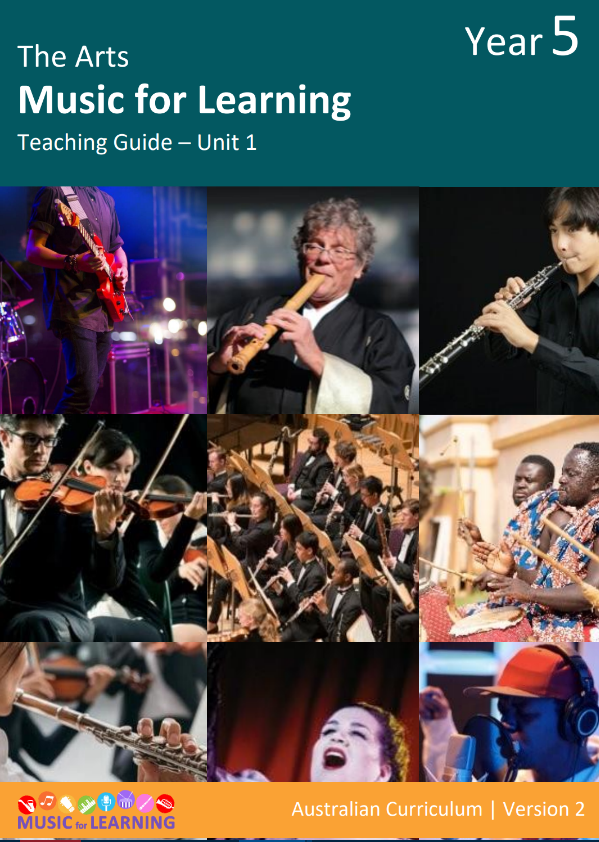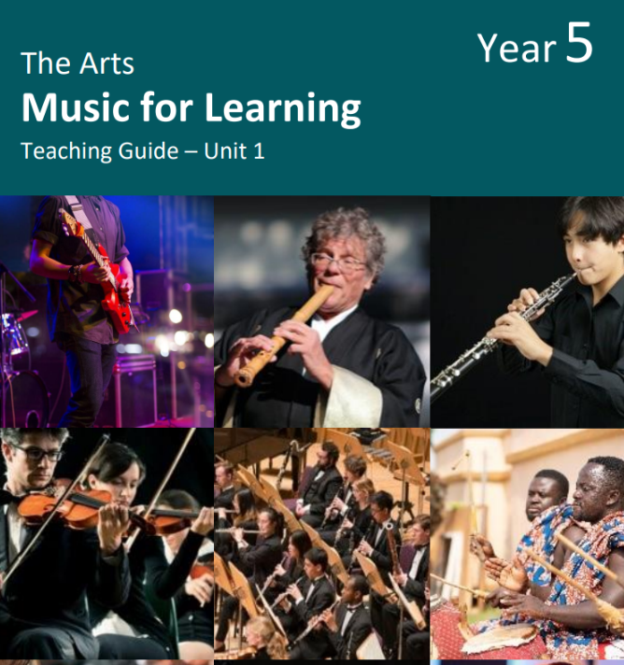Unit 1 Year 5
Music For Learning

Overview
In Year 5 Unit 1, The Science of Music, students develop an understanding of the elements of music through listening, exploring, responding, composing and performing activities. They focus on understanding the science behind sound production, learning new rhythmic units in simple time (tikatika, ti-tik and tika-ti), recognising and notating new pitch, fa, and expanding their knowledge and understanding of music vocabulary including anacrusis, ostinato, round and harmony.
Students explore a variety of repertoire to build their skills in music literacy and aural perception. They learn to express their own voice and ideas in performing and evaluate the music they make and music by other composers.
This unit aligns to the Australian Curriculum, Version 9:
- AC9AMU6E01 – Explore the ways that the elements of music are combined in music across cultures, times, places and/or other contexts.
- AC9AMU6E02 – Explore ways First Nations Australians use music to continue and revitalise culture
- AC9AMU6D01 – Develop listening/aural skills and skills for manipulating elements of music to achieve expressive effects when composing, singing and playing instruments.
- AC9AMU6C01 – Manipulate elements of music and use compositional devices to communicate ideas, perspectives and/or meaning when composing and practising music for performance, and notate, document and/or record the music they compose.
- AC9AMU6P01 – Perform music in a range of forms they have learnt and/or composed in informal and/or formal settings.
Learning objectives
- Discover how the voice is produced.
- Know that a vibrating object creates sound waves.
- Know that the speed of sound waves determines the pitch of the sound we hear.
- Understand how our ears receive sound.
- Categorise instruments according to how they make sound.
- Apply the science of music to the musical instruments of First Nations Peoples.
- Apply knowledge of breath support and vocal sound production to sing in unison and harmony.
- Visually and aurally recognise the note ‘fa’.
- Sing two new songs in unison and in harmony.
- Use aural skills to memorise and reproduce melodic phrases.
- Recognise the difference between a rhythmic ostinato and a melodic ostinato.
- Identify and count an anacrusis.
- Understand the relationship between quaver and semiquaver combinations.
- To compose and perform a rhythmic ostinato for a known song.
- To devise movement to represent meaning in a song.
Teaching resources
- 18 PowerPoint lessons
- Teaching Guides
- Student Workbook
- Assessment Task Sheet
Assessment
A single assessment occurs in Week 8 and consists of:
- Demonstration of knowledge of sound waves and instrument categories
- Recognising rhythmic units aurally
- Identifying notation features including stems, beams and an anacrusis
- Singing a song in canon in words and in time names.



Responses